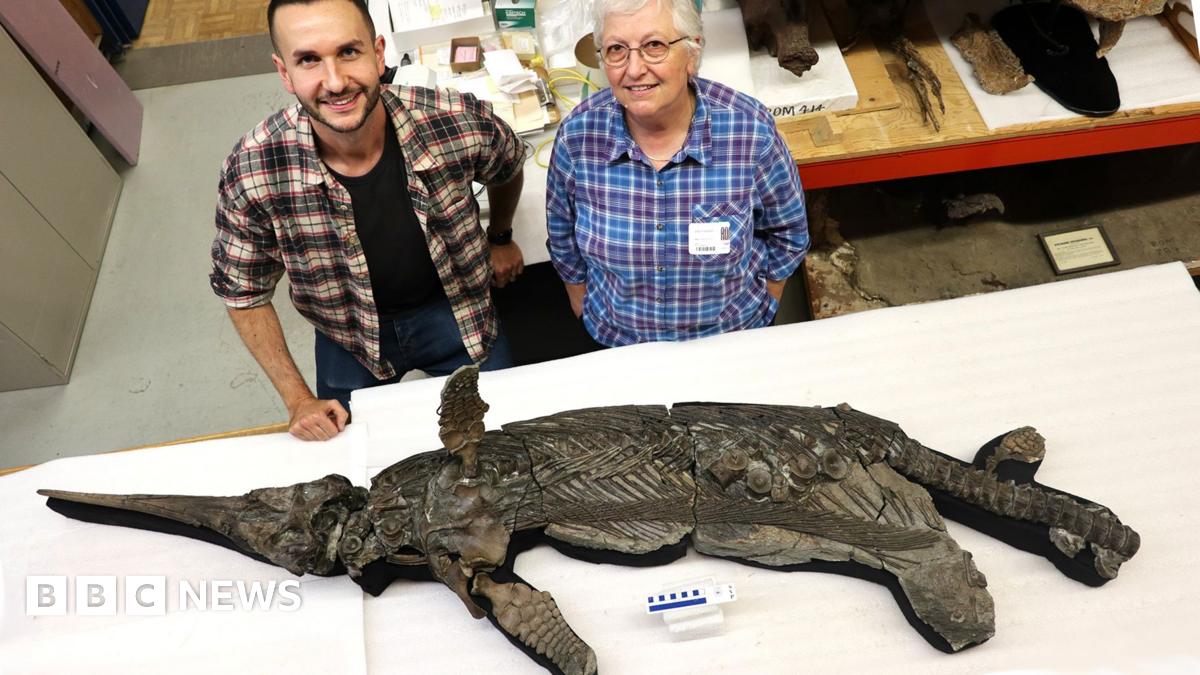Ichthyosaurs are classified as marine reptiles, not dinosaurs, because they spent their lives in the water. This particular ichthyosaur is thought to have swum the seas about 185 million years ago, a period from which very few ichthyosaur fossils have been found.
“During this time ichthyosaurs are incredibly rare, and Xiphodracon is the most complete individual ever found from there, helping to fill a gap,” Dr Lomax said. “It’s a missing piece of the puzzle in the ichthyosaur evolution.”
The “sword dragon” is thought to have been about 3m long and has several features that have not been seen in other species of ichthyosaur. Scientists say the strangest detail is a prong-like bone near its nostril. The skull has an enormous eye socket and a long sword-like snout that it used to eat fish and squid.
There are also clues as to how this particular specimen lived and died.
“The limb bones and teeth are malformed in such a way that points to serious injury or disease while the animal was still alive, ” said study co-author Dr Erin Maxwell from the State Museum of Natural History Stuttgart.
“The skull appears to have been bitten by a large predator – likely another much larger species of ichthyosaur – giving us a cause of death for this individual. Life in the Mesozoic oceans was a dangerous prospect.”
The ‘sword dragon’ is one of numerous ichthyosaur fossils that have been found along Dorset’s Jurassic Coast since the first discoveries of pioneering palaeontologist Mary Anning in the early 1800s.
